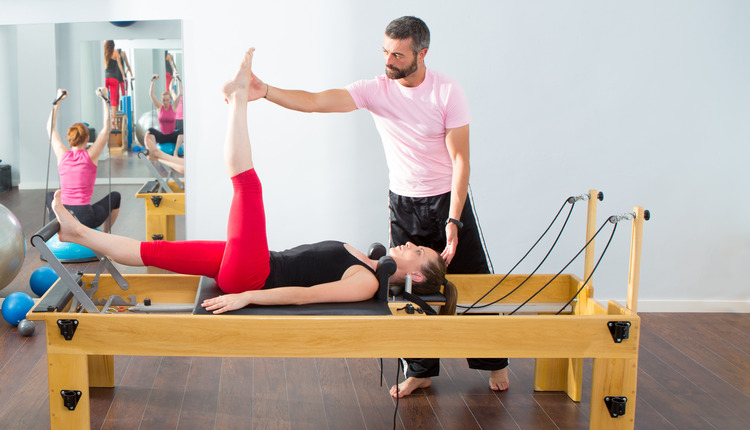
The importance of cardiovascular exercise had been researched and proven to be necessary for a healthy heart. The goal of any cardio routine is to sweat and get that heart rate elevated. But often, the most dedicated cardio king or queen can be seriously lacking flexibility. This lack of flexibility can cause some very alarming issues! Regardless of age, people can be in amazing cardiovascular shape but will have trouble doing a forward fold without wincing. They may even suffer from hip-flexor issues and chronic knee pain. This is often because they are not taking the time to stretch or are going about it the wrong way. As a trainer, it is essential for us to keep our clients in the best shape. By teaching them proper ways to stretch, we can help them prevent injury and speed recovery by stretching properly.
Clients will often take time to do their cardio routines, but will leave during the stretching portion of the class! As trainers, we must stress the deep importance of ending the workout with deep stretches- the body deserves it! Yet there are so many excuses, “I don’t have time”… “I’m not flexible enough to be stretching”…“I’ll get to it later”.
It is important to realize that some clients will be more organically flexible than others. A person may have naturally tight shoulders and even though they practice Yoga and Pilates ritually, they may not have as much flexion as others. But, by stretching the rotator cuff and upper back every day, they are certainly less tight in this area than if they weren't stretching it all. Will they ever be super flexible in the shoulders? Maybe not, but they are in a lot better shape than if they ignored the area completely.
Here are some basic tips and cues to give your clients during a stretching segment. Keep in mind that it is most important to stretch after the workout, when the body is warm and ready:
MAKE IT FLOWING! This will keep clients interested and will help them to enjoy the process more. They can also learn stretching sequences from you so they can stretch on their own. Also, as an instructor, the entire class will be fluid when the ending stretches go together in a nice sequence. Check out the video clip to view a simple flowing stretching segment for the lower body that can be added to any fitness class!
NO FORCING! There is a fine line between stretching and straining. If a stretch is so intense that they are feeling pain, or are finding it hard to breath, back off a little. Don’t give up on the stretch completely, but encourage them to listen to their body.
NO BOUNCING! Bouncing can strain or tear the area. Many people think that by bouncing, they are deepening the stretch. Instead, to intensify the stretch, they can go gently press their body into the stretch on an exhale.
BREATHE! Never hold the breath while stretching. Take long, smooth inhales and exhales through the nose.
RELAX! Release tension in the shoulders, neck, face, and jaw. Tell clients to mentally relax the face, jaw, shoulders and neck. It is so much easier and more effective to stretch a relaxed body than a tense one.
Clients will often take time to do their cardio routines, but will leave during the stretching portion of the class! As trainers, we must stress the deep importance of ending the workout with deep stretches- the body deserves it! Yet there are so many excuses, “I don’t have time”… “I’m not flexible enough to be stretching”…“I’ll get to it later”.
It is important to realize that some clients will be more organically flexible than others. A person may have naturally tight shoulders and even though they practice Yoga and Pilates ritually, they may not have as much flexion as others. But, by stretching the rotator cuff and upper back every day, they are certainly less tight in this area than if they weren't stretching it all. Will they ever be super flexible in the shoulders? Maybe not, but they are in a lot better shape than if they ignored the area completely.
Here are some basic tips and cues to give your clients during a stretching segment. Keep in mind that it is most important to stretch after the workout, when the body is warm and ready:
MAKE IT FLOWING! This will keep clients interested and will help them to enjoy the process more. They can also learn stretching sequences from you so they can stretch on their own. Also, as an instructor, the entire class will be fluid when the ending stretches go together in a nice sequence. Check out the video clip to view a simple flowing stretching segment for the lower body that can be added to any fitness class!
NO FORCING! There is a fine line between stretching and straining. If a stretch is so intense that they are feeling pain, or are finding it hard to breath, back off a little. Don’t give up on the stretch completely, but encourage them to listen to their body.
NO BOUNCING! Bouncing can strain or tear the area. Many people think that by bouncing, they are deepening the stretch. Instead, to intensify the stretch, they can go gently press their body into the stretch on an exhale.
BREATHE! Never hold the breath while stretching. Take long, smooth inhales and exhales through the nose.
RELAX! Release tension in the shoulders, neck, face, and jaw. Tell clients to mentally relax the face, jaw, shoulders and neck. It is so much easier and more effective to stretch a relaxed body than a tense one.












